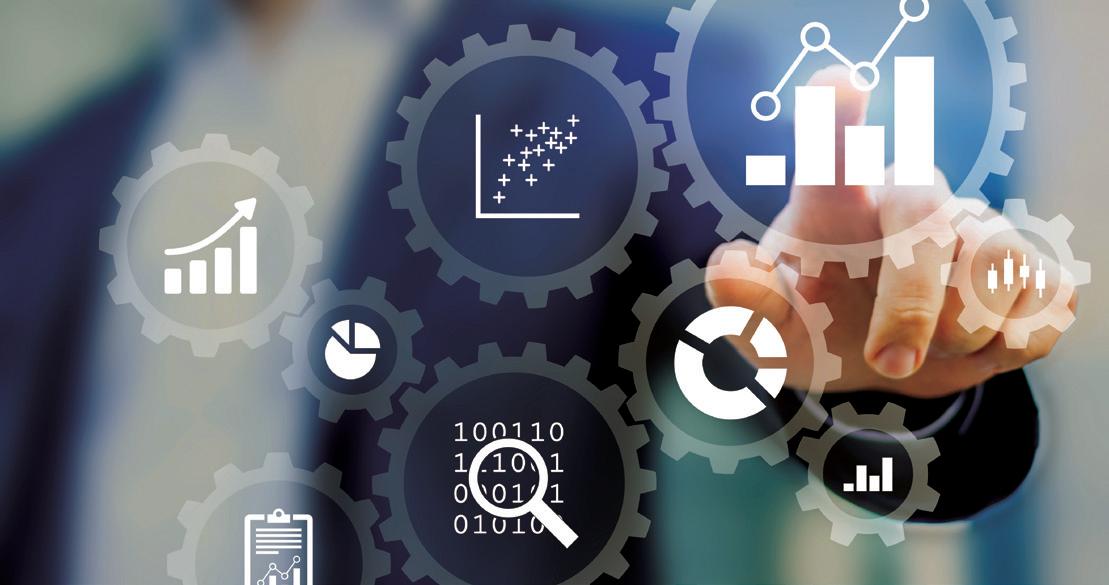
3 minute read
Using Data Analytics to Manage the Pandemic
BY MARC D. MINTZ, CPA, MARC MINTZ & ASSOCIATES, LLC
While the use of data analytics had been slowly gaining acceptance, the financial effect of the coronavirus pandemic has elevated data accumulation and analysis into the mainstream for a variety of businesses. From industry segments that have been decimated by the virus (lodging, tourism, airlines, dine-in restaurants and small brick and mortar retail establishments), to businesses that have greatly benefited (online sales, PPE manufacturers, delivery services and pharmaceutical companies), the need to swiftly analyze data has never been greater.
Advertisement
Once unimaginable weekly and monthly swings in revenues, and business metrics of every type, have necessitated the accumulation of business data so that actionable decisions can be made in near real time. Legacy systems that were developed to provide judgements based on data that is months, quarters and even a full-years old is no longer as meaningful an approach to manage business.
IMPROVED DECISION MAKING
Unable to purchase your favorite menu item at the McDonalds drive thru lane? Can’t get that bougie pocketbook in the exact shade to match your shoes? The pandemic has inspired dramatic operational adjustments as businesses reacted to uncontrollable customer, employee and supply line changes. Using real-time data provided from point-of-sale registers and online sales transactions, businesses are now attempting to maximize sales while conserving cash, reducing payroll cost and enhancing rates of return on assets.
Leveraging data analytics, fast food restaurants moved to reduce item choices while maintaining revenue. Providing everything to everyone at any time has been upended with a more strategic approach; eliminating slow-moving and less-profitable menu items simplifies multiple aspects of the fast-food business model.
Likewise, reducing stock-keeping units (SKUs) of a high-priced luxury item from hundreds to a few dozen improves a retailer’s profits by decreasing inventory carrying costs, simplifying consumer decision making, and reducing product returns and exchanges. No matter how long this strategy of offering less remains viable, data analytics will guide assessments of when to begin offering more again.
Employee staffing can also be enhanced with the use of data analytics. Instantaneous review of call center and online shopping activity allows human resources departments to schedule customer service representatives on a shift-by-shift basis.
Using the Internet of Things (IoT), fuel storage tanks at retail gasoline stations are continuously monitored. Fuel truck deliveries can be efficiently scheduled, factoring into account such diverse priorities as fuel grades required, delivery truck availability and road traffic conditions. By adding small increments of efficiencies to more and more of the individual data points affected, asset utilizations of every type can be increased.
INCREASED EFFICIENCY
Utilization of data analytics to increase efficiency can be introduced into a plethora of business activities and processes. In manufacturing, the monitoring of each step in the production process affords an opportunity to identify and react to many different scenarios. Examples include the following:
* Decrease direct costs by scrutinizing outsourced component rejects and selecting vendors accordingly.
* Decrease direct labor costs by tracking employee time to assemble products and taking the corrective actions to improve low performers’ completion times.
* Decrease working capital requirements and increase customer satisfaction by tracking and reducing the time from receipt of customer orders to delivery of finished goods.
* Identify where problems occurred in the manufacturing process by following and documenting warranty claims and product returns.
* Reduce unexpected manufacturing interruptions by electronically monitoring production machinery to schedule suggested maintenance and track equipment down time.
Critical to any data analytics project is the prerequisite to capture the right information. Additionally, this same information must be available for evaluation within a timeframe that allows for rapid response.
One would be hard pressed to find a single industry or company that cannot be improved or benefit from the application of properly applied data analytics. An emerging trend is the pairing of data analytics with artificial intelligence. Under this type of integrated system, data is analyzed and solutions are suggested with little need for time-consuming human analysis.
While the pandemic is a mere inflection point for the reintroduction of management techniques and data sciences that existed well before the emergence of the deadly virus, their expanded use will lay the foundation for even more sophisticated systems that will then be available for the next black swan event.
Marc D. Mintz, CPA, CITP, CGMA, is the managing member of Marc Mintz & Associates, LLC, a technology consulting firm that assists businesses with strategic planning and the selection and implementation of information technology systems. He is a former NJCPA Trustee and a past president of the Passaic County Chapter. He can be reached at marc@marcmintz.com or 973-808-9040.
DO MORE: LISTEN TO THE NJCPA TECHTALK PODCAST njcpa.org/techtalk









